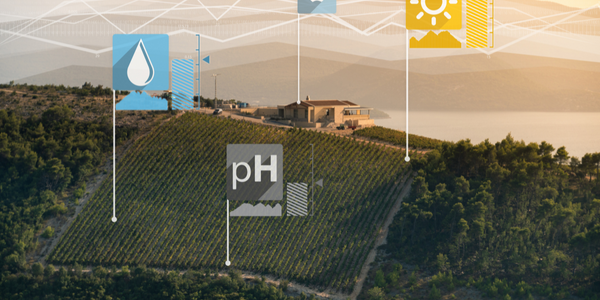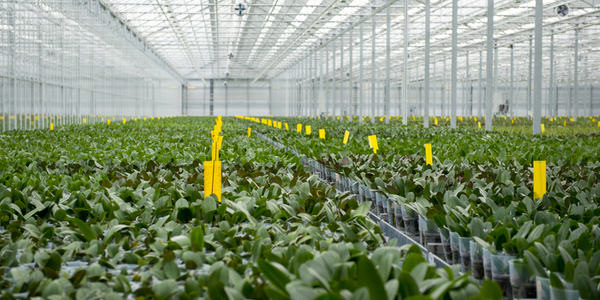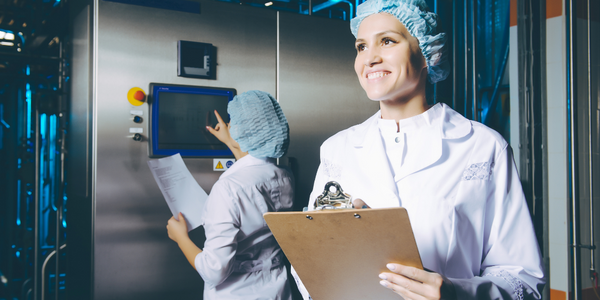Download PDF
Powering High-Throughput Plant Genetics to Cultivate the Fruits and Vegetables of Tomorrow
Technology Category
- Analytics & Modeling - Big Data Analytics
- Application Infrastructure & Middleware - Data Exchange & Integration
Applicable Industries
- Agriculture
- Food & Beverage
Applicable Functions
- Product Research & Development
- Quality Assurance
Use Cases
- Predictive Quality Analytics
- Root Cause Analysis & Diagnosis
Services
- Data Science Services
- System Integration
The Challenge
Pairwise, a company that uses CRISPR and gene editing to develop new varieties of fruits and vegetables, faced several challenges. The nature of plant genetics meant that each plant had its own phenotypic and genotypic characteristics, requiring individual tracking. This resulted in sample sets often containing hundreds of entities, each with its own optimization needs and custom steps. This is significantly larger than a typical biopharma sample set. Additionally, plant-based workflows required more complex infrastructure, more team handoffs, and longer timelines compared to cell-based workflows. Pairwise needed a centralized, easily-accessible way to organize and communicate experiment data to every team, from discovery to development. Program leaders also needed to turn thousands of data points into insights to drive decision making. They needed pre-computed reports aggregating metrics for successful plants each week to move forward with.
About The Customer
Pairwise is a company that is uniquely situated between agriculture and biotech. They apply cutting-edge technologies such as CRISPR gene editing and next-generation sequencing (NGS) to one of the oldest human technologies: food cultivation. Pioneering this field presents a particular set of technical challenges. Their tools must be customizable to fit agriculture-focused experiments and workflows, while also supporting the cutting-edge scientific techniques that they’re applying to agriculture for the first time. They turned to Benchling for a flexible, cloud-based platform that could track and streamline both the agricultural and biotechnological aspects of their R&D. The company is based in Durham, NC and has between 51-250 employees.
The Solution
Benchling provided a robust plant registry that tied actions like inventory tracking, data collection, and seed retrieval to the plant in question. This Registry provided a convenient system within which Pairwise could track their entire plant development pipeline. The pipeline began with an idea for a potentially beneficial gene edit. Researchers then designed plasmids and checked the gene edit’s sequencing results using Benchling Molecular Biology. Once a plasmid had been selected and validated, transformations into plants happened on a large scale. Templatized Benchling Notebook entries and workflows helped standardize data collection during large-scale gene editing and plant growth. As plants moved from the wet lab to the greenhouse, Benchling Requests provided a single communication point, ensuring that every handoff took place under identical conditions. Plants were molecularly screened using NGS, and seeds were only collected from those capable of passing on the desired trait. The subsequent generation was then screened to confirm the trait had been inherited. Benchling associated each plant’s database entry with these experimental results, making it easy to identify candidate plants and seeds, and discard undesirable ones. API access allowed Pairwise to pull data directly from specialized instruments and to build customized report views.
Operational Impact
Quantitative Benefit
Related Case Studies.

Case Study
Intelligent Farming with ThingWorx Analytics
Z Farms was facing three challenges: costly irrigation systems with water as a limited resource, narrow optimal ranges of soil moisture for growth with difficult maintenance and farm operators could not simply turn on irrigation systems like a faucet.

Case Study
The Kellogg Company
Kellogg keeps a close eye on its trade spend, analyzing large volumes of data and running complex simulations to predict which promotional activities will be the most effective. Kellogg needed to decrease the trade spend but its traditional relational database on premises could not keep up with the pace of demand.

Case Study
HEINEKEN Uses the Cloud to Reach 10.5 Million Consumers
For 2012 campaign, the Bond promotion, it planned to launch the campaign at the same time everywhere on the planet. That created unprecedented challenges for HEINEKEN—nowhere more so than in its technology operation. The primary digital content for the campaign was a 100-megabyte movie that had to play flawlessly for millions of viewers worldwide. After all, Bond never fails. No one was going to tolerate a technology failure that might bruise his brand.Previously, HEINEKEN had supported digital media at its outsourced datacenter. But that datacenter lacked the computing resources HEINEKEN needed, and building them—especially to support peak traffic that would total millions of simultaneous hits—would have been both time-consuming and expensive. Nor would it have provided the geographic reach that HEINEKEN needed to minimize latency worldwide.

Case Study
Greenhouse Intelligent Monitoring and Control Solution
Farming Orchids is the most successful form of precision farming in Taiwan, and also the most exported flower. Orchids need a specific temperature and humidity conditions to grow and bloom, and its flowering time may not be in line with market demands, so the price collapses when there is overproduction. Therefore, some farmers began to import automated greenhouse control systems for breeding and forcing, which not only improves quality, but also effectively controls the production period and yield to ensure revenue. In 2012, an orchid farmer built a Forcing Greenhouse of about 200 pings (approximately 661 Square Meters) in Tainan, Taiwan. The system integrator adopted Advantech’s APAX-5000 series programmable automation controllers to build the control platform, coupled with Advantech WebAccess HMI/SCADA software, to achieve cloud monitoring. The staff of the orchid field can monitor important data anytime via smart phone, iPad, and other handheld devices, and control the growth and flowering conditions. System requirements: In the past, most environmental control systems of orchid greenhouses in Taiwan used PLCs (Programmable Logic Controller) with poorscalability and control, and could not be connected to the Internet formonitoring from the cloud. For advanced database analysis and networking capability, the PC platform must be adopted. Therefore, PAC Systems (Programmable Automation Controller) with both PLC programming capabilities andPC functions is a better choice.The environmental control of the Orchid greenhouse switches on and off devices like fan, shade net, cooling/heat pump, liquid flow control, water-cooling wall etc. It is controlled by a control panel of electric controllers, and is driven by a motor, to adjust the greenhouse temperature, humidity, and other environmental conditions to the set parameters.






